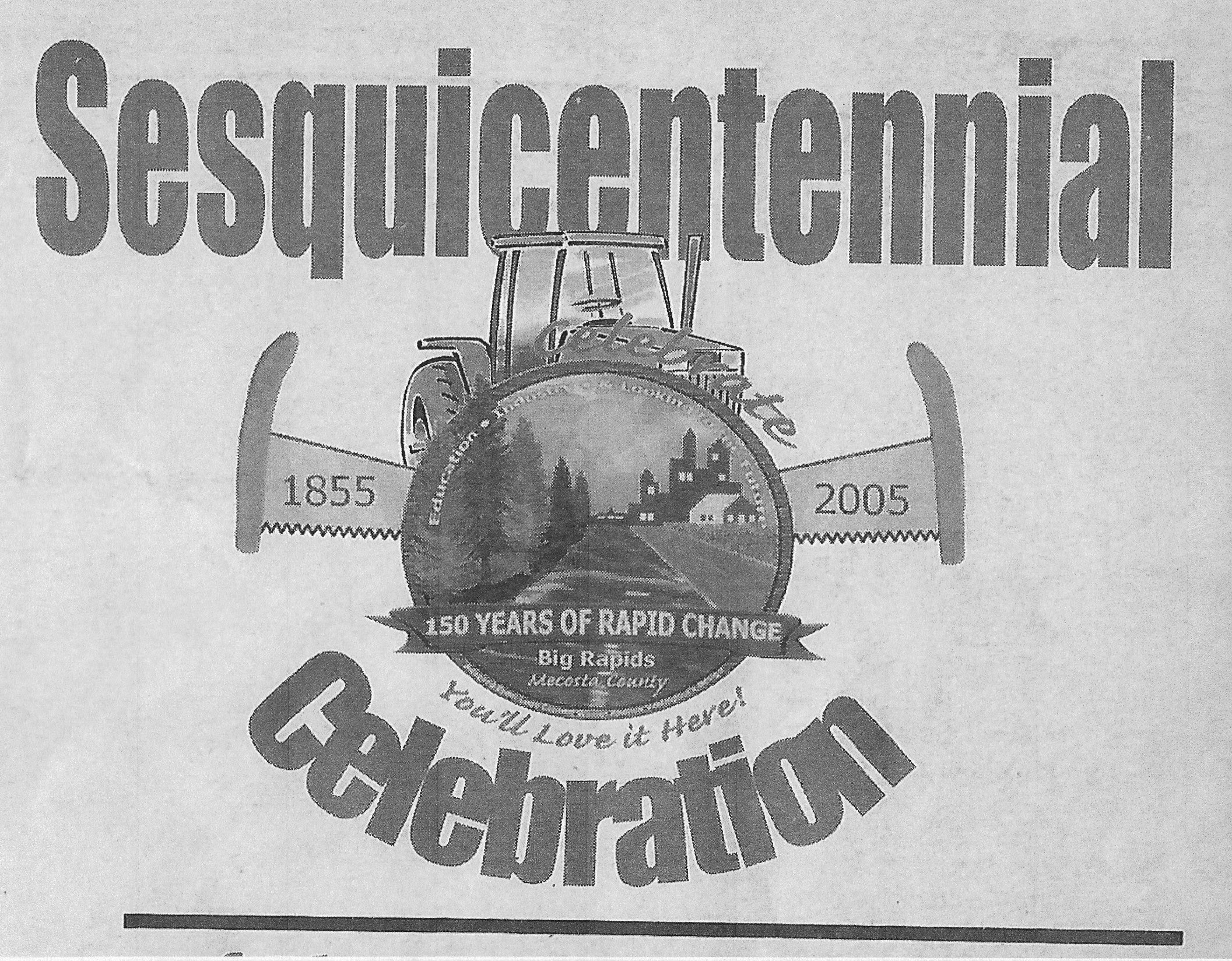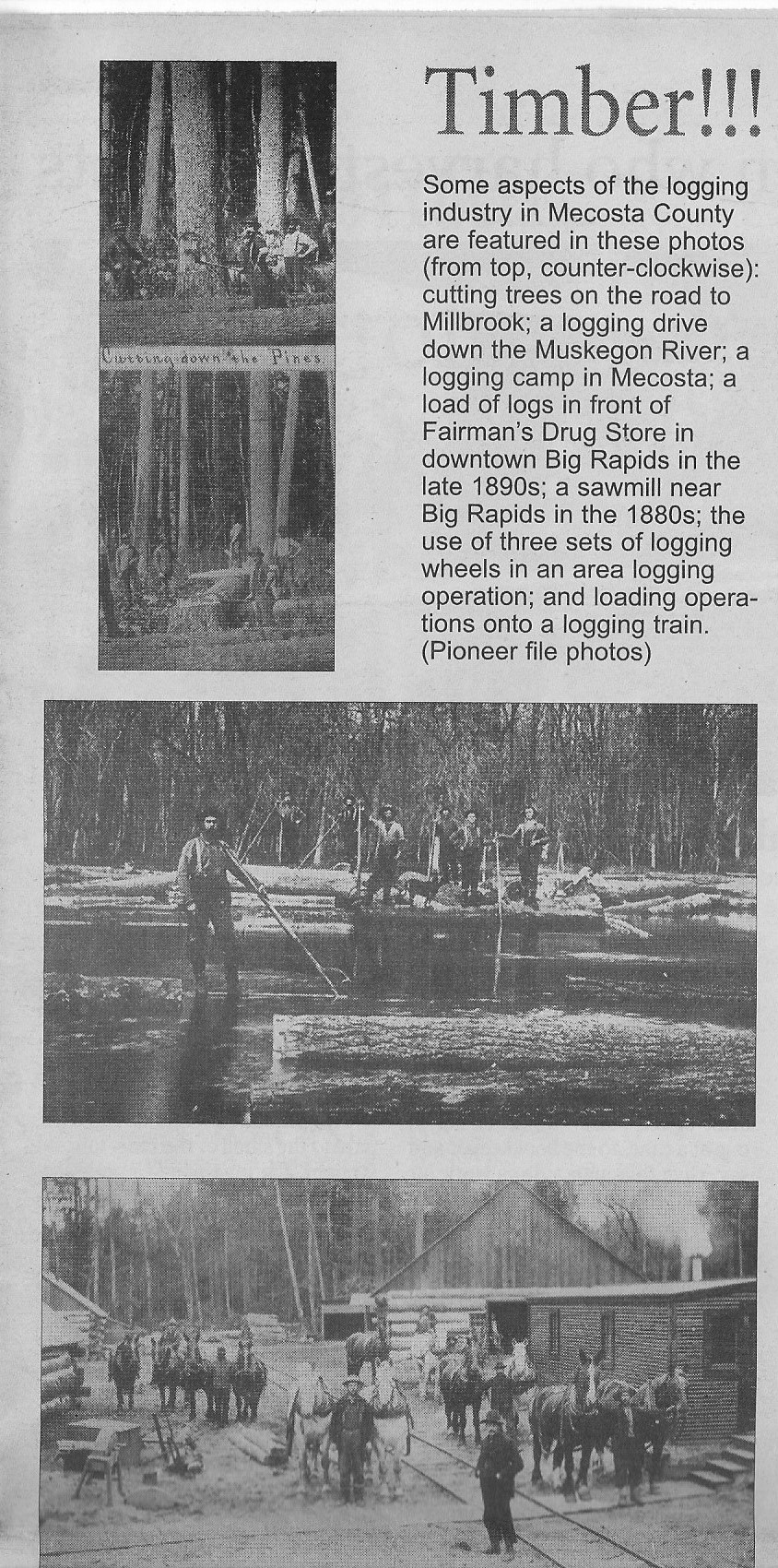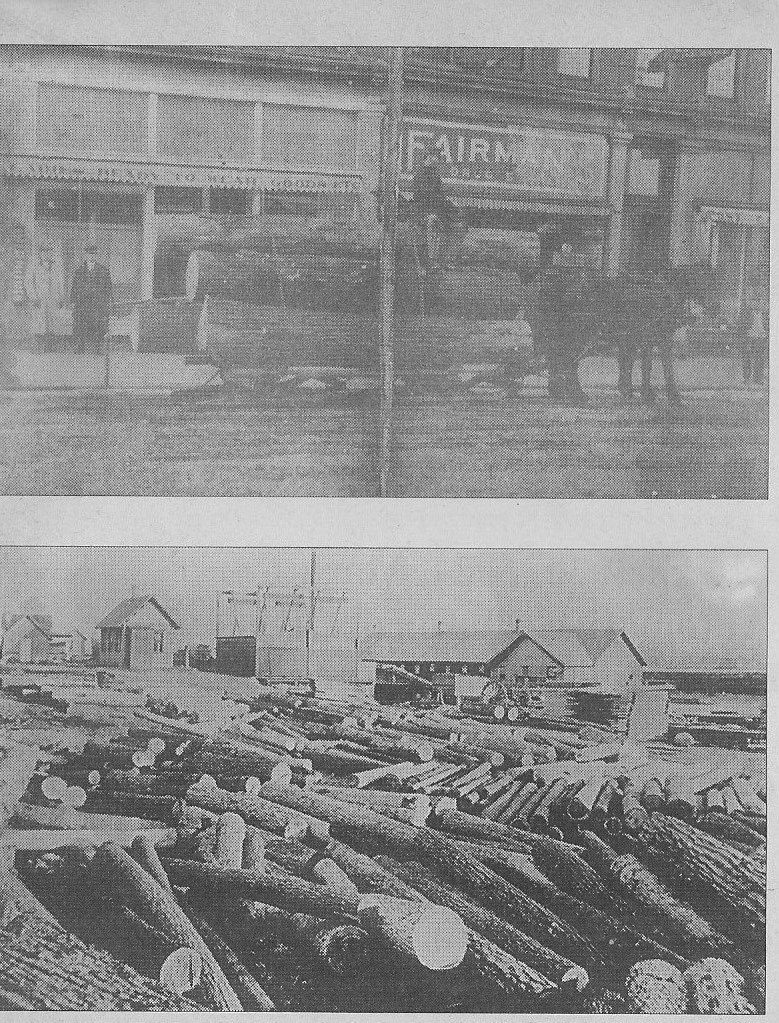
Part V - Government, a supplement to the Big Rapids Pioneer Newspaper. Used with permission.
BIG RAPIDS AND MECOSTA COUNTY JUST KEEP ON GROWING
Michael Taylor - Senior Staff Writer

As realtors often say: "The three most factors are, location, location and location." This maxim was never as true as it was for Mecosta County in the early days of its industrial development.
With settlement beginning in the mid 1800s, the county's rivers, lakes and streams were instrumental in development of the logging industry here. Likewise easy railroad access was a key factor in the community's continued growth.
Named for a Potawatomi chief, the village was a refuge for African Americans both during and after the Civil War, freed and escaped slaves came to the area where they settled and established homesteads.
Originally known as "Leonard", the city of Big Rapids was renamed after the rapids in the Muskegon River as it passes through the comminity.
And for half a decade the city thrived on the harvest of the great stands of virgin White Pine and hardwoods in Mecosta and neighboring counties.
Big Rapids early grown also hinged in no small part on Woodbridge N. Ferris, a former state governor, who in 1884 started the Ferris Industrial School, known today as Ferris State University, one of the countys largest employers.
But industry in the area actually dates back much further than the 1800s. The area may have been settled as early as 11,000 B.C., or so relics unearthed in neighboring areas would suggest. The Anishnabeg - or "origina" - people of the Three Fire Ojibay/Chippewa, Potawatomi and Ottawa tribes traded with French, British and Ameican Fur Traders, maintaining an economic contact with the world at large from the mid-1600s to mid-1800s.
Most of the trade at that time was in pelt (mostly beaver) and maple syrup and sugar.
The arrival of the white man in greater numbers was closely followed by the logging industry. And the Muskegon and other area rivers became the primary means of moving logs downstream to the mills in Muskegon and Saginaw.
Following the Civil War, the local population grew quickly, as many Scandinwavian and German people arrived in the area. New homes and shops were constructed, increasing the need for wood and thus bolstering the already booming logging industry.
Three railroad companies started operations during this time, providing a new means of transporting logs and wood products to other markets.
Water, steam and electric power developed with the construction of two dams in Big Rapids in 1866 and 1870 and a much larger dam in Rogers Heights in 1906, opening the door to additional development.
And, as the land was stripped pt its virgin white pine and hardwoods, settlers moved in to clear the stumps left behind so they could farm where the trees had been cleared.
Pickles, potatoes and beans were major crops in the early decades pf this century and the county emerged into a major dairy county as well.
In 1933, the area got another economic boost when W. C. "Top" and James Taggart discovered oil and gas in an area about five miles southeast of the city. The Austin Field, as it became to be known, provided an new source of energy and created many new employment opportunities.
The Austin Field was converted to a vast underground natural gas storage facility under the auspices of the American Natural Resources Company.
Natural gas pipelines now trace their way across the state going both from and to this facility. It continues to provide employment for Big Rapids and area residents as well.
Despie fluctuations in the area's population over the years, Big Rapids has continued to expand in terms of industry and one industrial park on the east side nearly filled to capacity and another underway.
The recent completion of the industrial park near the airport stands as testament to the readiness of the city to grow into the future.


Return to Mecosta sesquicentennial Page
Return to Home Page




